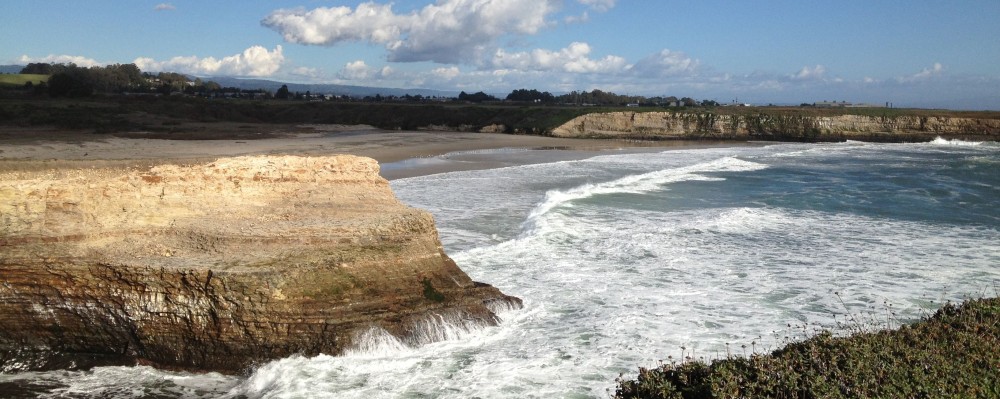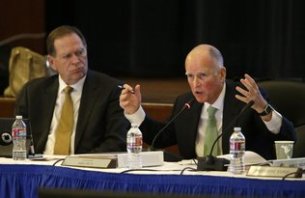E-learning and Digital Culture from the University of Edinburgh has been an incredible journey and experience in Massive Online Open Courses for 42,874 eager learners. From my understanding, this course was not structured using the format of the typical MOOC. Jeremy Knox in the overview video indicated that the E-learning and Digital Culture course would be “Experimental in Several Ways.” That prediction was incredibly true in a positive and spectacular way.
Most MOOCs are more closely related to Bricks & Mortar courses in structure and delivery. Lecture, quizzes, and tests with reading material are the usual format. The course content is relatively narrowly defined, the outcomes are relatively narrowly defined, and the student’s pathway through the experience is, again, fairly narrowly defined.
The structure of this course is broadly defined; creating an opportunity for the Participant/Student to basically design their own experience and design their own course.
Futurist Thinkers have predicted that massive amounts of information would be accessible to answer specific search questions and provide unlimited learning opportunities:
1895, Paul Otlet: “Repertoire Bibliographique Universel”
Predicted the massive collection of information and a system to organize and retrieve that information creating the first “analog search engine.”
From Wikipedia:
http://en.wikipedia.org/wiki/Paul_Otlet
“In 1895, Otlet and La Fontaine also began the creation of a collection of index cards, meant to catalog facts, that came to be known as the “Repertoire Bibliographique Universel” (RBU), or the “Universal Bibliographic Repertory”. By the end of 1895 it had grown to 400,000 entries; later it would reach a height of over 15 million.”
From YouTube: The Electric Telescope, 1934
http://www.youtube.com/watch?v=hSyfZkVgasI
1936-38, HG Wells: World Brain
From Wikipedia:
http://en.wikipedia.org/wiki/World_Brain
“World Brain is a collection of essays and addresses the English science fiction pioneer, social reformer, evolutionary biologist and historian H. G. Wells written during the period 1936-38. Throughout the book, Wells describes his vision of the world brain: a new, free, synthetic, authoritative, permanent “World Encyclopedia” that could help world citizens make the best use of universal information resources and make the best contribution to world peace.”
1988, Isaac Asimov: Personal Learning
Asimov anticipates “Once we have computer outlets in every home hooked up to enormous libraries, where anyone can ask any question about something you are interested in……….. In your own home, at your own speed, in your own direction, on your own time….Then everyone will enjoy learning…….”
YouTube:
1991, Nicholas Negroponte: Being Digital
“In the post-information age, we often have an audience the size of one. Everything is made to order, and information is extremely personalized. A widely held assumption is that individualization is the extrapolation of narrowcasting—–you go from large to small to smaller group, ultimately to the individual. By the time you have my address, my marital status, my age, my income, my car brand, my purchases, my drinking habits, and my taxes, you have me—– a demographic unit of one.” (Nicholas Negroponte, Being Digital, pg 164)
E-learning and Digital Culture gives the individual Participant/Student an opportunity to design a personal learning experience within the broad parameters of the course. The content presented is massive with many, many options and activities from which to select. Participants/Students can choose activities and experiences from a wide range of optional pathways in the course: Videos, Scholarly Articles. Popular Articles, Social Media, Structured Forums, and Learner-Led Group formation. The Participants/Students are faced with a variety of strategies for navigating through the course.
Many Participants/Students were very energized by this opportunity to basically custom design and personalize their own course. However, some Participants/Students were actually very intimidated by the process. Often in conventionally taught courses, there is a body of information to acquire within fairly narrow parameters: a student attends the lecture internalizes material demonstrates learning via quizzes, tests, and papers. In Mike Orme’s personalized learning class, you had to make choices from a wide variety of potential activities, exercises, and experiences and gather points to demonstrate your learning. This personalized approach presented you with multiple pathways and a tremendous amount of content from which to build your course.
E-learning and Digital Culture moves fully away from the Teacher Centered format to the Student Centered Format. The Participant/Student makes significant choices about the content to watch or read, and what digital environment to discuss the concepts presented in the course.
Not only does the Participant/Student select the major content to the for learning and choose a Pathway basically designing course; the Participant/Student constructs their own final assessment. There are some parameters for the Digital Artefact; however, the options are many.
The whole concept of Connectivism is left out there to be discovered.
From Wikipedia:
“Connectivism is a theory of learning based on the premise that knowledge exists in the world rather than in the head of an individual. Connectivism proposes a perspective similar to Vygotsky’s Activity theory in that it regards knowledge as existing within systems which are accessed through people participating in activities. It bears some similarity with Bandura’s Social Learning Theory that proposes that people learn through contact. The add-on “a learning theory for the digital age”, that appears in Siemens’ paper[1] indicates the emphasis it gives to how technology affects how people live, how they communicate and how they learn.”
A variety of options allow students to find peer-to-peer interactions and discussion. Interestingly enough, individuals were drawn to the electronic environments in which they were most comfortable. Some folks like Twitter, some folks like FaceBook, some folks participated in forums, some folks used VoiceThread, and a variety of other peer-to-peer strategies emerged.
Was this course successful……Certainly. However, success will be determined by each Participant/Student; individual by individual. More importantly, E-learning and Digital Culture should not be evaluated by completion rates.
From my perspective, I did not have specific criteria or objectives that I wanted to achieve from the outset. The content was absolutely fascinating,. The topic very close to my personal interests and academic background. Consequently, I became fully immersed in the topics, structure, and content presented. Further, amongst my intimate small group discussion on Facebook 4,810 other students; we had a great time sharing information.
In many respects, the structure of this course is a grand experiment in learning and innovative pedagogy.
E-learning and Digital Culture from the University of Edinburg was designed specifically for me……..An Audience of One…….

